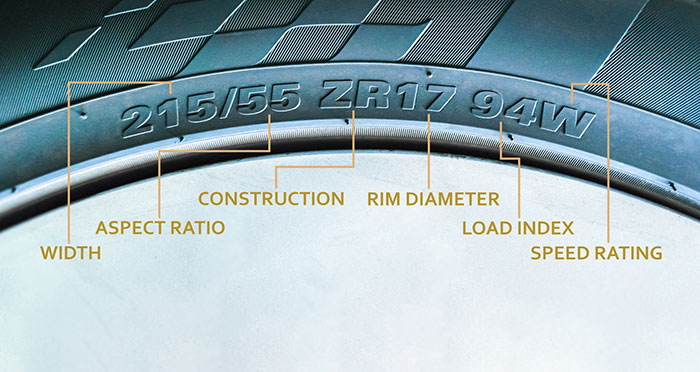
Does your car need new tyres? If you have been into a tyre shop lately or if you have been researching the best tyres to buy for your vehicle, you may have come across the term ‘tyre load rating’. When purchasing tyres there’s many things to consider, but having tyres that have the right load rating for your specific car is essential for optimal safety, handling, and performance. Let’s take a look at what it all means.
Tyre load rating refers to the maximum weight that a tyre can safely carry when inflated to its recommended pressure. It is usually expressed as a numerical code on the sidewall of the tyre, and the code indicates the maximum load capacity of the tyre in kilograms.
Identifying the Load Index Number on Your Tyre
This is a two or three-digit number found on the sidewall of the tyre. The higher the number, the greater the load capacity. It can be confusing to find this number as it is at the end of the complete tyre size code.
Start by locating the tyre code. An example might be 195/65R16 91V.
The code will appear in the flowing order:
Width – The first three-digit number refers to the tyre’s width in millimetres from sidewall to sidewall when mounted and inflated to the recommended pressure. Referring to the above example, the number is 195, meaning the tyre’s width is 195 millimetres.
Aspect Ratio – The next two-digit number is the aspect ratio. This is the height of the sidewall from the wheel rim to the top of the tyre’s tread, expressed as a percentage of the tyre’s width. In the above code, the number is 65, meaning the sidewall height is 65% of the tyre’s width.
Construction – The letter “R” indicates the tyre’s construction, which is radial.
Wheel Diameter – The next number is the wheel diameter, which is measured in inches. This number indicates the size of the wheel that the tyre is designed to fit. For example, in the above code the number is 16 so the tyre is designed to fit on a 16-inch wheel.
Then we come to the load index and speed symbol – As mentioned, this is the maximum load capacity under which your tyre can safely operate, and at what speed. This is subject to the tyre being in sound condition, correctly fitted, and with the recommended inflation pressure. To understand the tyre load and speed symbols you will need to refer to the relevant charts. The tyre load rating chart is a standardised guide that provides information about the maximum load capacity of a tyre at a given tyre pressure. In this example, the load rating is 91. According to the chart, the tyre can carry a maximum load of 615 kilograms.

The load capacity of the tyre should not exceed the recommended load capacity of the vehicle as stated in the owner’s manual.
What Happens When the Load Rating is Too Low or High?
A tyre with a load rating that is too low for your vehicle may not be able to support its weight, leading to reduced handling and increased risk of accidents. On the other hand, a tyre with a load rating that is too high for your vehicle can result in a harsher ride and decreased fuel efficiency. It’s best to consult your vehicle manual or a tyre specialist to determine the correct load rating for your vehicle. In some cases, your insurance can become void if you fit the wrong tyres.
The Importance of a Tyre Pressure Monitoring System
Even if you have the correct tyres fitted to your car, with the correct load rating, it is essential that tyres are properly inflated at all times. A tyre pressure monitoring system (TPMS) constantly monitors inflation, and alerts the driver to any changes so they can be rectified as quickly as possible. Many vehicles come fitted with a TPMS in-built, but for those that do not, it can be easily purchased and installed from Safe T Tyre. Buy a premium TPMS from us today and keep your vehicle safer on the road. Call us on 1800 499 383 or shop online now.

